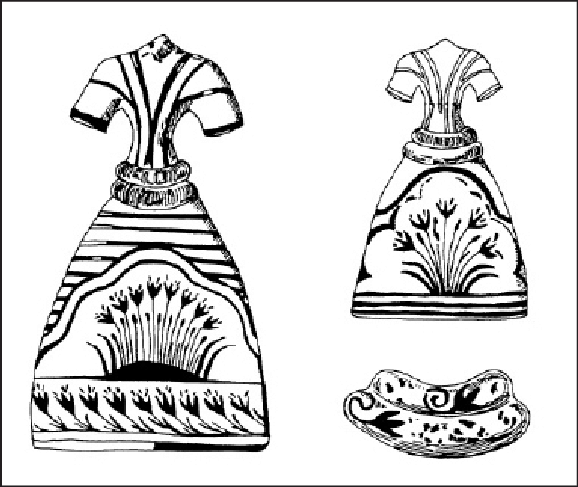
Thread: Scene from the trojan war: Cassandra clings to the Xoanon, the wooden cult image of Athene, while Ajax the Lesser is about to drag her away in front of her father Priam (standing on the left) and rape her. Roman fresco from the atrium of the Casa del Menandro, Pompeii. 

Cassandra was a Trojan priestess of Apollo. According to the legend, Apollo fell in love with her, and sought to win her by giving Cassandra the gift of prophecy...
Some sources say that she promised Apollo her favors, some say that she promised nothing. Regardless, after receiving the gift, she refused the god, which as you can imagine pissed him off...A lot...
The enraged Apollo could not revoke a divine power, so he added to it the curse that though she would see the future, nobody would believe her prophecies...
Her cursed gift from Apollo became an endless pain and frustration to her. She was seen as a liar and a madwoman by her family and by the Trojan people...
Cassandra foresaw the destruction of Troy, she warned the Trojans about the Greeks hiding inside the Trojan Horse, Agamemnon's death, her own demise at the hands of Aegisthus and Clytemnestra, her mother Hecuba's fate...Everything...However, her warnings were all disregarded...
So far, a classic Greek tragedy...But here is the interesting bit (for me):
In some versions of the myth, it wasn't Apollo who gave her the prophetic powers directly. She was asleep in the Apollo's temple, where the snakes licked (or whispered in) her ears so that she could hear the future...
You know snakes, solar animals, not chthonic animals, working on behalf of the sun god:
oldeuropeanculture.blogspot.com/2020/01/enemy-…
oldeuropeanculture.blogspot.com/2020/06/the-ch…
oldeuropeanculture.blogspot.com/2020/06/bactri…
oldeuropeanculture.blogspot.com/2020/01/enemy-…
oldeuropeanculture.blogspot.com/2020/06/the-ch…
oldeuropeanculture.blogspot.com/2020/06/bactri…
And this is even better. In some versions of the myth, Apollo curses her by spitting into her mouth...
Well well well...
Well well well...
This is really interesting. Why? Because this is the third case of "spitting into someone's mouth" was used to either transmit sacred knowledge, ability to see (know) things others don't, or to revoke this knowledge or to mess it up...And that snakes are somehow involved...
The other two examples can be found in this tread from last night
https://twitter.com/serbiaireland/status/1349856266110328832
I think that the full version of this belief was preserved in the Serbian story and that only bits are preserved in the two Greek legends. Here is the full Serbian version in English pitt.edu/~dash/type0670…
• • •
Missing some Tweet in this thread? You can try to
force a refresh










